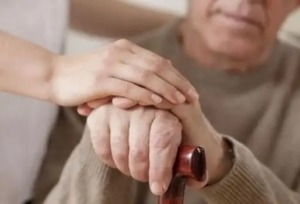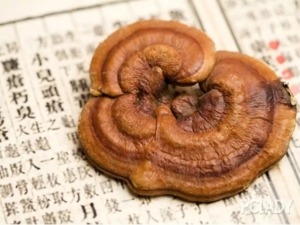Parkinson’s disease (PD) is a neurodegenerative disease with an estimated 2–3% prevalence in the population above 65 years of age. The prevalence increases with age, from 1% at age 45–55 to 4% (men) and 2% (women) at age 85. Typical examples are the motor symptoms related to (nonreversible) loss of dopaminergic cells in the substantia nigra. Patients also suffer from nonmotor problems of physical (constipation), physiological (sleep problems), cognitive (disturbed memory), and affective (depression, anxiety) nature. These are supposedly related to disturbances in the cholinergic, serotonergic, and norepinephrine neurotransmitter systems. Substances like carbidopa/levodopa, substituting for dopamine, are a symptomatic treatment for motor symptoms; substances that address the cholinergic and serotonergic system aid with cognitive and affective problems. The downside of therapy, especially with these dopaminergic substances, is that they can lead to (severe) side effects, including abnormal muscle movements, nausea, and psychosis, that reduce the quality of life.
Ganoderma lucidum (GL) is a popular Traditional Chinese Medicine (TCM) known as “Ling-Zhi” and “Reishi .”This medicinal fungus is widely used for promoting health and longevity. It includes several active ingredients, of which polysaccharide is the most studied. Preclinical research uses a water-soluble extract from the culture medium of the fungus MAK. The extract MAK, also labeled as a functional food, contains various constituents such as polysaccharides, including beta-glucans, triterpenes, and lignin-derived from the culture medium and its digestion products by the mycelia.
Preclinical research demonstrated a reduction in the duration of immobility in the forced swimming test in mice and rats orally treated with 100–400 mg/kg and 1 g/kg, respectively, of MAK. These findings are similar to those after administering serotonergic (5-HT) antidepressants. Of note, head-twitch responses that signal 5-HT2A receptor activation were reduced by MAK, suggesting the involvement of this receptor in MAK’s antidepressant actions. Next to effects on affective processes, preclinical research has also shown that the extract reduced MPTP-induced Parkinsonism in an animal model and protected dopaminergic neurodegeneration in rat brains. These effects suggest that GL could play a role in treating PD.
A patient with PD who just started using Ganoderma lucidum decided to self-medicate for 2–3 months with this substance to test whether it would bring him the “enlightenment” experienced by another patient. This unique opportunity to understand the effects of treatment with GL on (non-)motor symptoms in humans resulted in a case study described in this article. The focus of the current study was on nonmotor symptoms based on several facts and reasons. First, treatments addressing nonmotor symptoms are highly needed. Second, in other neurological disorders, interventions aimed at increasing self-compassion alleviate psychological distress, something important in PD, as stress increases the severity of motor symptoms. Third, the quality of life is associated with the severity of motor symptoms. Therefore, in this study, questionnaires focusing on the quality of life, self-compassion, and emotion regulation were chosen next to a questionnaire assessing (non-)motor Parkinson’s symptoms.
The emphasis of this study was the nonmotor dimension, to that end, including measures of self-compassion, emotion regulation, and quality of life. The most notable finding was the increase in one facet of self-compassion, Mindfulness, three months after self-treatment started. Other than that, motor symptoms stayed stable. There were no pronounced changes in quality of life, and emotion regulation seemed to deteriorate over time while slightly improving at the 3-month assessment. The other rated the motor symptoms as more severe than the patient, although with a slight improvement at the 3-month follow-up. In the second month, outliers in mood and sleep (quality and quantity) were observed, most likely associated. There were no remarkable findings concerning mood, sleep, or stool that would indicate an effect of self-treatment with GL on these parameters. The differences in average mood ratings by the patient and others show the need always to include ratings by others. Another step could be confronting the patient with the other’s scores and discussing discrepancies. Nonetheless, the other’s scores represent an overall impression of a month based on one rating. At the same time, the patient continuously rated his mood, which might explain differences in self-other ratings.
The scores on the PD symptom questionnaire (MDS-UPDRS) were slightly higher than those of a sample of PD patients, of whom most were categorized as two on the scale of Hoehn and Yahr. The latter means having bilateral involvement without impairment of balance. The majority received some pharmacotherapy and had a mean PD duration of 8.3 years (SD: 6.7; range: 0–40 years). The patient in the present study did not receive pharmacotherapy and had the diagnosis for five years. The patient’s average score on Part I was beyond one standard deviation of the patient sample who scored 11.5 on average (SD: 7.0); the average score on Part II was higher than the average of the PD sample, although within one standard deviation of that score [16.0 (SD: 10.0)].
Overall, quality of life scored as relatively good with no significant changes. Compared with other patients, 66 years of age on average, and with an average diagnosis “age” of 6.7 years, the patient’s overall well-being was in between that of patients with a Hoehn and Yahr staging score of one (unilateral impairment) and two (bilateral impairment). The self-compassion was generally relatively stable over the three months, labeled as “moderate,” and comparable to that of a community sample, except for two scales, Self-Kindness and Mindfulness. Self-Kindness (e.g., “I am disapproving and judgmental about my flaws and inadequacies”) was high at baseline and did not change throughout the self-medication. Mindfulness (e.g., “When something painful happens, I try to take a balanced view of the situation”) increased from “moderate” at baseline to “high” at a 3-month follow-up. The ratings on these two scales were comparable to that of a meditator sample (with a similar age as the PD patient). The increase in Mindfulness suggests something changed in this facet of self-compassion, during the self-medication, without changing the “overall” self-compassion.
Findings showed that all facets of emotion regulation diminished over time. At least for three aspects (Goal-Directed Behavior, Impulse Control, and Limited Access to Emotion Regulation), self-treatment with GL seemed to push back this deterioration, although only when treated for three months. Nonetheless, three other facets, Nonacceptance of Emotional Responses, Emotional Awareness, and Emotional Clarity, did not seem to be influenced by self-treatment with GL. The patient’s scores were generally similar to the mean (plus one standard deviation) scores of two samples of healthy adults 23 and 36 years of age on average, respectively. Of note, the Nonacceptance, and the Total score of the patient, seemed to be higher than the youngest sample described in Gratz and Roemer. This finding is remarkable as Staples and Mohlman (2012) showed that scores are lower in “older” people as they are more able to cope with situations or have more effective coping strategies.
In Conclusion, The findings suggest improvements after self-treatment for three months with GL in an unmedicated patient with PD. However, these changes were observed in a selection of nonmotor and emotional facets, which were not statistically tested. Of note, before the initiation of GL use, the patient was already using vitamin supplements. Given that the only newly introduced factor at the time of these assessments was GL, the observed changes can, with some certainty, be attributed to GL and not to other supplements. The demonstration that due to unmet needs, patients are self-medicating to keep their living standards is an important message. The patient experienced positive effects of self-medication without experiencing adverse effects. Next to additional preclinical research, placebo-controlled clinical trials in Parkinson’s patients with GL treatment are warranted to conclude whether this substance is safe to use and beneficial in improving (non-)motor symptoms, as suggested by animal research and as suggested by the current case study.

Leave A Comment